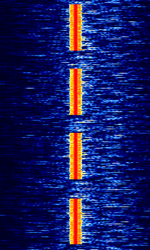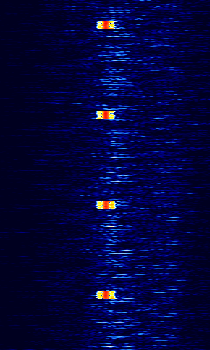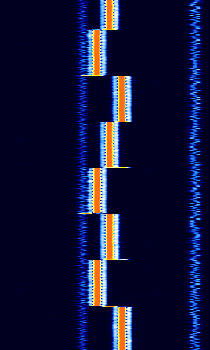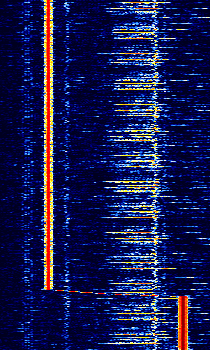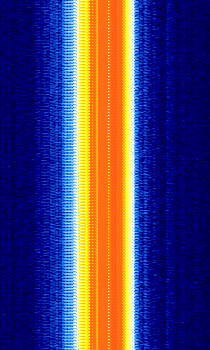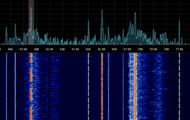Induction cooker interference
RFRadio Frequency interference from an induction cooker can sometimes appear on the LFLow Frequency (30-300 kHz) or VLFVery Low Frequency (3-30 kHz) range where it may look like an actual transmission. It's unlikely to radiate very efficiently, so when it is encountered, the source is likely nearby.
This example is from an AEG induction cooker. It shows typical power control behavior. On the lowest power levels, power is controlled by on/off duty cycle control. On higher power levels, power is apparently controlled by changing frequency which probably changes current in a resonant circuit.Warning: Placing an antenna on top of or very close to an induction cooker may damage the receiver. If you want to analyze your induction cooker, keep the antenna at a safe distance.
Samples[edit]
Showcase sample shows power level 5. There is background noise which is not coming from the induction cooker.| Power level 1, low duty cycle |
Power level 8, full duty cycle, frequency keeps shifting |
Change from power level 9 to 10, frequency is adjusted to constant value |
Power boost mode |
|---|---|---|---|
Frequencies[edit]
Typical induction cookers operate on some tens of kHzKiloHertz (kHz) 10^3 Hz. Some high performance induction cookers that are capable of heating non-ferromagnetic cookware may use higher frequencies, 100 kHzKiloHertz (kHz) 10^3 Hz or more.
The device shown here uses 49 kHzKiloHertz (kHz) 10^3 Hz (power levels 1 to 6), 49 kHzKiloHertz (kHz) 10^3 Hz to 22 kHzKiloHertz (kHz) 10^3 Hz (power levels 7 to 14) and 19 kHzKiloHertz (kHz) 10^3 Hz (power boost mode).
